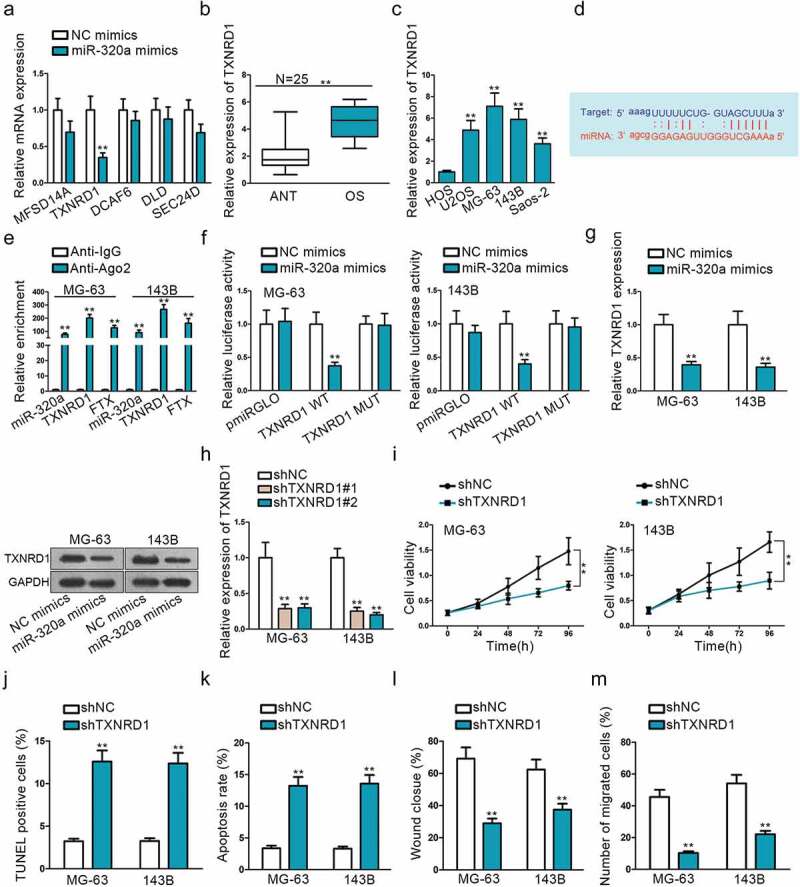Figure 3.

TXNRD1 is a potential target mRNA of miR-320a. (a) Use miR-320a mimics to select target gene TXNRD1. (b) The relative expression of TXNRD1 in OS tissues. (c) QRT-PCR was performed to determine the relative expression of TXNRD1 in one normal cell line (HOS) and four OS cell lines (U2OS, MG-63,143B, Saos-2). (d) Potential binding sides between miR-320a and TXNRD1 predicted on Starbase. (e-f) RIP and dual-luciferase report verified the interaction between miR-320a and TXNRD1. TXNRD1 WT was formed through sub-cloning separately the wild-type in TXNRD1 3ʹ-UTR sequence to interact sequences of miR-320a pmirGLO luciferase reporter vector. TXNRD1 MUT was constructed using mutant binding sites. (g) QRT-PCR and Western blot found were used to measure TXNRD1 mRNA and protein expression after miR-3320a overexpression. (h) shTXNRD1 transfection efficiency was examined by qRT-PCR. (i) CCK8 found shTXNRD1 transfection weakened cell viability. (j-k) TUNEL and flow cytometry were used to evaluate the effects of shTXNRD1 on apoptotic cells. (l-m) Wound-healing and Transwell were conducted to examine the effects of knockdown of TXNRD1 on cell migration. **P < .01.
